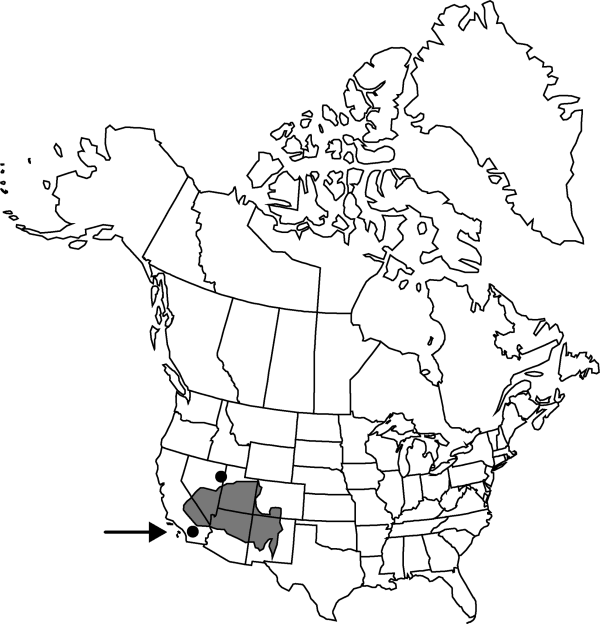Echinocereus triglochidiatus
in F. A. Wislizenus, Mem. Tour N. Mexico, 93. 1848.
Plants unbranched or 1–12 (–76) -branched, forming large mounds of branches to 300. Stems usually erect or nearly so, cylindric (spheric), (2–) 5–70 × (3–) 5–13 cm; ribs 5–8 or 8–12, crests slightly undulate (localized populations contain plants with strongly interrupted ribs); areoles 10–40 mm apart. Spines (0–) 3–11 per areole, straight to curved or contorted, appressed (radial spines) or spreading to projecting outward (some radials and central spines when present), white to yellow, gray, or black; radial spines (0–) 1–10 per areole, (0–) 15–90 mm; central spines 0–1 (–4) per areole, angular, (0–) 50–120 mm. Flowers (4–) 5–10 × 3–7 cm; flower tube 20–35 mm; flower tube hairs 1–2 mm; inner tepals bright-orange-red to dark red, proximally paler (bases sometimes yellow or white), (18–) 25–40 × (5–) 10–15 mm, tips thick and rigid; anthers usually pink to purple; nectar chamber 5–11 mm. Fruits green to yellow-green or pink (rarely red), (15–) 20–35 mm, pulp white. 2n = 22.
Phenology: Flowering Apr–Jun; fruiting 2-2 1/2 months after flowering.
Habitat: Upper edge of Mojave Desert to coniferous forests, igneous and calcareous rock outcrops, cliffs, and sandy hills
Elevation: 1000-2800 m
Distribution

Ariz., Calif., Colo., Nev., N.Mex., Utah.
Discussion
Echinocereus triglochidiatus is the earliest name for a large group of diploid and polyploid taxa treated as conspecific by L. D. Benson (1969, 1982). The tetraploids are now recognized separately as E. coccineus, including E. polyacanthus Engelmann of Mexico. The diploids in the flora area are here divided into two allopatric species: E. triglochidiatus and E. arizonicus.
Plants in the western portion of the range of Echinocereus triglochidiatus have been called E. triglochidiatus var. mojavensis (Engelmann & J. M. Bigelow) L. D. Benson. That taxon includes curly-spined plants (mainly in California) and straight-spined plants (including most populations in Arizona, Utah, and western Colorado). The latter were mapped by L. D. Benson (1969, 1982) as part of his concept of E. triglochidiatus var. melanacanthus. Plants with the fewest and largest spines, called E. triglochidiatus var. triglochidiatus, occupy the eastern portion of the species’ distribution. The largest spines, whether central or radial, of var. triglochidiatus are sharply angular in cross section and 1–2 mm thick.
Less distinctive plants have been called Echinocereus triglochidiatus var. gonacanthus, a name carelessly applied to miscellaneous plants throughout the range of var. triglochidiatus. A well-known population at White Sands, New Mexico, inhabits saline flats adjacent to pure gypsum dunes. The unusually large, southernmost plants at White Sands, New Mexico, shrink to the same size as northern plants when grown together in a common garden (D. Weniger 1970). The epithet inermis has been applied at various taxonomic ranks to individual plants with spines absent or nearly so in the eastern portion of var. mojavensis (in and around southeastern Utah).
A geographically distant tetraploid, Echinocereus coccineus var. paucispinus, superficially resembles some eastern E. triglochidiatus but may be distinguished by its relatively terete and more consistently straight spines. Small plants of var. triglochidiatus without reproductive structures might be confused with E. fendleri; records of E. triglochidatus from near the Mexican border probably are misidentifications of E. fendleri in vegetative condition.
Selected References
None.
Lower Taxa
"thick" is not a number.